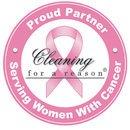Caring for Your Hardwood Floors
Daily cleaning will keep your hardwood floors looking new, longer.
Your hardwood floors were beautiful when they were installed, but to keep hardwood floors looking that way, there is a little maintenance required. Cleaning hardwood floors can be broken down into three types: daily care, quarterly care, and preventative maintenance. Daily care involves sweeping hardwood floors with a soft bristle broom to remove dirt that can cause abrasions. Also, you should always clean up spills on your hardwood floors as quickly as possible to avoid water damage. Quarterly care is needed to remove surface grease and dirt that may have accumulated on your hardwood floors. Be sure to use a cleaning product that has a neutral pH when you're cleaning your hardwood floors. Ammonia or ammonia-based products should never be used on hardwood floors because they will dull the finish and may cause discoloration. Using a very wet mop with a liquid soap or using abrasive cleaners on hardwood floors is never recommended, because both methods have the potential to strip the finish on your hardwood floors, or cause the hardwood floors to deteriorate prematurely.
To prevent future damage of your hardwood floors, there are a few simple things you can do. Use area rugs in high traffic areas, use felt pads under legs and feet of furniture so you won't scratch your hardwood floors when moving the furniture, and take your shoes off at the door! This article from WFCA.org will guide you through caring for your hardwood floors.
Your hardwood floor is installed. Your house finally feels like a home. But now what? How do you care for your new investment?
Meet Mat
Floor mats are a wonderful thing when it comes to hardwood floors. Tiny particles, like dirt, can act like sandpaper and scratch your wood. By placing a floor mat at each entryway and encouraging family members and guests to wipe their feet, the majority of dirt and grime will remain on the mat. Also put a floor mat or rug in any area where water could be splashed — like near the kitchen sink. This will hinder any possible water damage.
Note that rubber-backed or non-ventilated floor mats or rugs can damage your floor. Instead use floor mats or rugs made especially for hardwood floors and be sure to shake them out regularly.
Whistle While You Work
Along with a hardwood floor comes the responsibility of keeping it clean. The better care you take, the longer your floor will maintain its original beauty. Step one is to purchase a high quality broom so that you can sweep your floor regularly of dirt, dust and other particles.
Second step is a vacuum cleaner without a beater bar, to get in between the boards and other hard to reach areas.
Deeper cleaning techniques vary depending on the installation and finish of your hardwood floor. For “Finish in Place” hardwood floors, using an 8”x14” terrycloth mop with a rotating head that makes cleaning corners, under cabinets and along base boards as simple as pie is recommeded.
Professional cleaning products recommended by your flooring retailer can be used to remove tough stains and spills without dulling the finish of your wood floor. Makers of “Pre-finished” floors recommend their own specific products for routine maintenance. Check with your retailer for details.
Do and Don’ts
- Don’t wax a wood floor with a urethane finish
- Do use cleaners that won’t leave a film or residue
- Don’t use ammonia cleaners or oil soaps on a wood floor — they’ll dull the finish and affect your ability to recoat later.
- Do use a professional hardwood floor cleaner to remove occasional scuffs and heel marks (just spray some cleaner on a cloth and rub the stained area lightly)
- Don’t wet mop or use excessive water to clean your floor (wood naturally expands when it’s wet and can cause your floor to crack or splinter). For information on steam cleaning hardwood floors, see our blog post on Floor Talk.
- Do clean sticky spots with a damp towel or sponge
- Do minimize water exposure and clean spills immediately
Go Deep
If and when your hardwood floor begins to look like it belongs beneath the feet of gold miners in an old western saloon, it’s time to consider screening and recoating.
Screening is the process used to abrade or grind down your floor’s polyurethane finish. Next, fresh coats of urethane are applied. The result is a rejuvenated floor that looks as good as the day it was installed!
If the damage to your hardwood floor is severe, then you may require sanding and refinishing. This process involves sanding your floor down to the bare wood and refinishing it. Only go to this effort if screening and recoating doesn’t solve your problem. Replacement boards may be available so you don’t have to refinish the entire area. Be sure to go pro whenever you have work done on your hardwood floors!
Protect Your Investment
All hardwood floors fade or change shades over time. Like our own skin, wood’s exposure to sunlight may greatly increase this process and cause permanent damage.
Window treatments are recommended to shade your floors from the sun’s harsh rays. We also recommend rotating area rugs and furniture regularly, allowing wood floors to age evenly from UV exposure.
To avoid permanent marks and scratches, it’s a good idea to cover furniture and table legs with flannel protectors. Be careful when moving heavy objects across your floor to avoid scuffing.
Ladies — your stiletto heels may be fashionable, but what’s not in fashion (or covered by your warranty) are the dents and scratches they cause to wood floors. Likewise, trim your pet’s nails regularly and keep any and all other sharp objects away from your floors.
Love your floors and your floors will love you back for a long, long time.
To keep your hardwood floors looking new, more intense maintenance may be required as the years go by. The condition of the finish on your hardwood floors is important because it acts as protection. If you are uncertain if the finish on your hardwood floors is wearing off, you can do a simple test. Begin in a high-traffic area and pour one to two tablespoons of water onto the hardwood floor. If the water soaks in immediately and leaves a darkened spot on your hardwood floor, the finish is worn and water can damage the wood. If the water soaks in after a few minutes and darkens the hardwood floor only slightly, the finish is partially worn. If the water beads on top of the hardwood floor, the surface is properly sealed. Repeat this test in low- and medium-traffic areas on your hardwood floors. If the finish has worn off, it is a good idea to refinish to increase the longevity of your hardwood floor.







